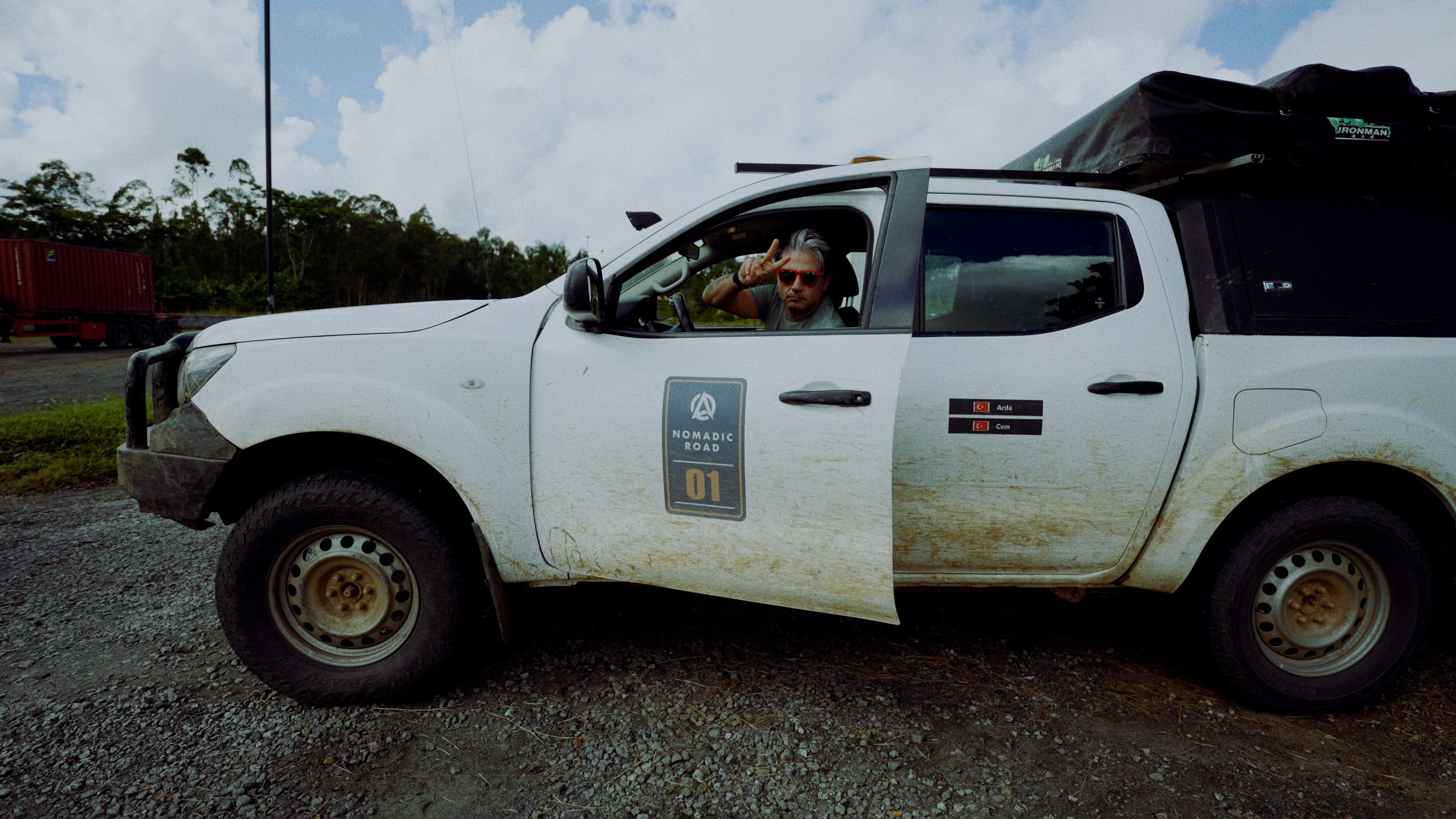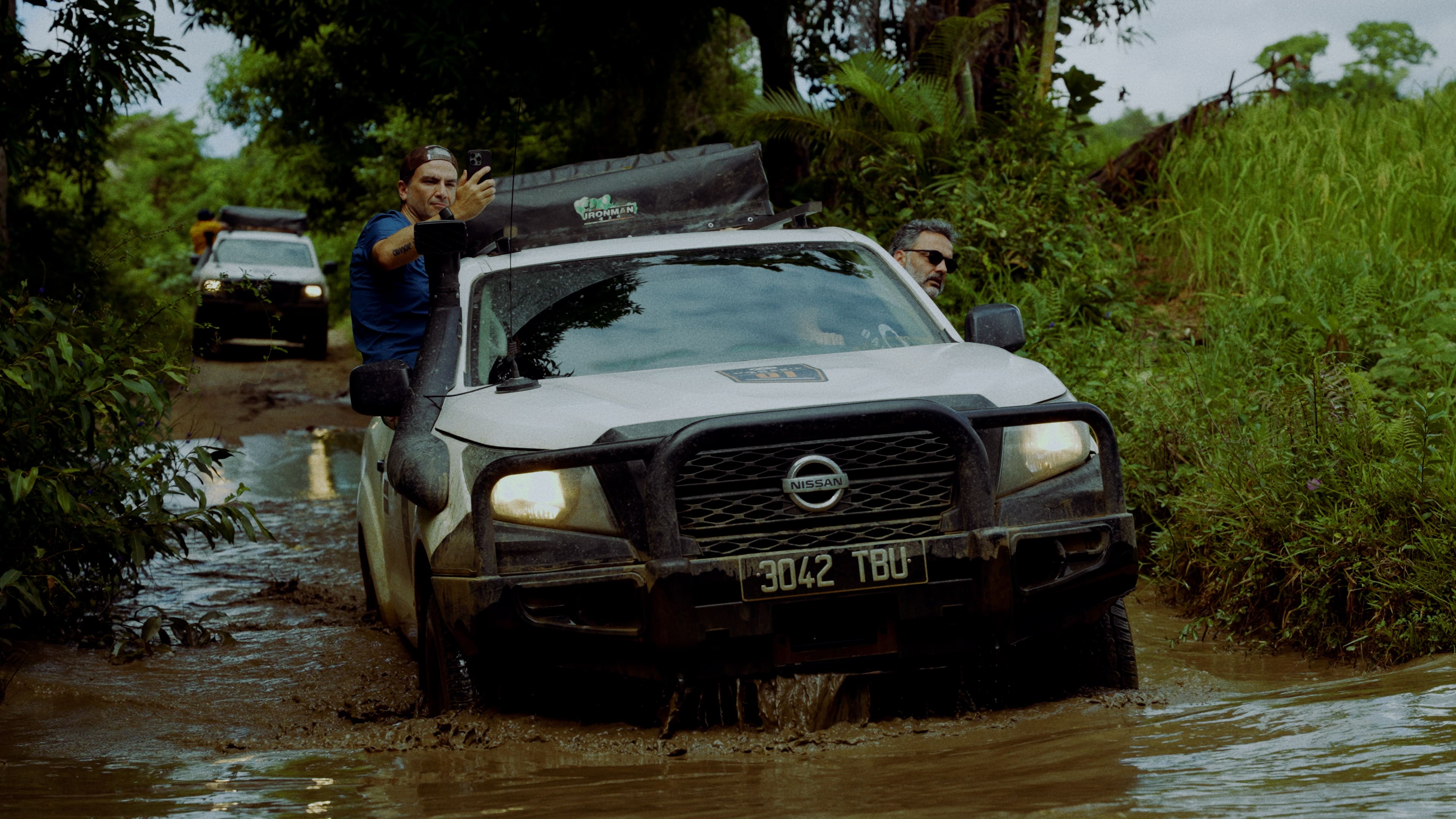
Meet the Expedition Leaders Taking You to Africa’s Farthest Corners
Meet Rob and Frank, two of Nomadic Road’s seasoned Africa expedition leaders, who navigate some of the continent’s wildest terrains – from Madagascar’s treacherous RN5 to the remote heart of the Kalahari. What does a day in their life look like, and what are the toughest parts of a job that looks fantastical from the outside?
Frank has lived in Madagascar for over 15 years. “The funny thing is, I always said I could never live on an island,” he laughs. “Back when I worked in East Africa, some of my colleagues lived in Zanzibar, and I remember thinking, ‘No way. Too small. I’d go mad.’”
Madagascar, however, has a way of proving people wrong. “Despite being an island, it feels almost like a continent,” Frank says. “You can be in a dense rainforest in the morning and cross into a dry, arid landscape by afternoon. Every part of the country is a different world altogether.” Since settling there, Frank has founded his own travel company that leads trips into the island’s wildest corners. He’s also been at the helm of Nomadic Road’s infamous RN5 expedition – a journey that traverses one of the most treacherous coastal routes in the world.
Rob, on the other hand, calls the Zambian bush home. “I live quite remote,” he says, grinning when I comment on how clear our video call connection is. “We have Starlink.” But on the job, the internet becomes a distant luxury for Rob, who leads Nomadic Road’s Kalahari desert expedition, cutting through the heart of Botswana into Namibia. “Very few people go there,” he explains. “You generally get crystal-clear days, beautiful night skies, and challenging terrain. The wildlife is just a bonus, really.”
The Realities of Operating Madagascar Self-Drive Tours
A day in the life of an expedition leader might sound glamorous as hell – driving across epic landscapes, and getting paid to do what many might never experience in their lifetime. But the job comes with a string of challenges, and as Frank puts it – “misery that turns into stories.”
For Frank, leading expeditions in Madagascar comes with infrastructural challenges. The country is still far behind when it comes to organising overland journeys – roads are rough, facilities are basic, and logistics can be unpredictable. “But Nomadic Road has high standards,” Frank says. “Their clients may compare experiences across countries – Mongolia, Peru, Bolivia – so naturally, they expect a similar level (of provisions) here.”
Frank has spent years building a local crew that’s both capable of handling extreme unpredictabilities and also meets the language and service expectations of a global clientele on these Madagascar self-drive tours.

To illustrate Madagascar’s ruggedness, Frank shares a story: “In the 1980s, there was an international rally called the Camel Trophy. It was an extreme adventure with Land Rovers, held in tough terrains like the Amazon. They ran it about ten times. The only edition where participants never made it to the finish line was the one held in Madagascar.” You can hear the undertone of pride in Frank’s voice, as if to say – THIS is where I organise expeditions.
Every Nomadic Road expedition demands being ready for things not to go your way – that’s just how they’re designed. But the Madagascar RN5 expedition takes this uncertainty to an entirely different level. “You don’t know where you’ll end up at the end of each day,” Frank says. “Cars will get stuck, time will disappear… that’s just part of it.”
The route from Tamatave to Maroantsetra involves 18 river crossings. “Some pontoons are decent metal platforms with diesel engines that can carry 3–4 cars. Others are just bamboo rafts that ferry one vehicle at a time,” Frank explains.
Managing an expedition here demands a delicate dance of precision planning and immense flexibility. “We’ve identified a few beautiful, safe camping spots that serve as our ‘planned backups’. Our guides know which ones we prefer. But if we don’t make it, we camp elsewhere. That’s just how it is out there.”
The Guy Who Keeps You Out of Trouble
When I ask Rob to describe his job as an expedition leader in two sentences, he responds: “I’m there to make sure everything runs smoothly,” he says. “I have to make sure no one does anything reckless… no off-road driving, no wandering off into the bush. You never know when you’ll come across an elephant.”
Unlike Frank, Rob’s challenges aren’t as much about infrastructure as they are about bureaucracy. “Getting entry into national parks can be a nightmare. Sometimes you spend two hours at the gate, even though everything’s been booked in advance. They want to check papers, call someone, the internet might go down, there's no power – that kind of thing.”
Rob also speaks to the complexities of bringing together people from different worlds. “Most of the clients we get are people from big cities – Mumbai, Milan, Paris, Amsterdam – and the people we work with on the ground often come from rural villages. Managing expectations between those two can become tricky.”

And then, there are the difficulties that come with the sheer remoteness of places like these. Rob tells me of a past expedition where one of the participants broke his arm. “We had to drive him to the nearest town, which was about 100 kilometres away. The roads weren’t so bad, but if that had happened in the Central Kalahari, it would’ve taken 8 to 10 hours of bumpy driving to get out. That’s just part of the challenge of being out here.”
Yet, Rob is quick to add that most people who sign up for these expeditions come prepared – both physically and mentally. “Even after breaking his arm, he stayed, and his wife drove the car for the rest of the trip, which was really great,” he smiles.
Rob and Frank Love Watching Africa Blow Travellers’ Minds
For Rob, there’s much to love about leading the Kalahari desert expedition. High on the list is this unescapable sense of freedom. “You’re not constantly hemmed in by rules and regulations the way you are in the West,” Rob says. “In many ways, it reminds me of growing up in Australia 40 years ago. And the people are incredibly friendly. If you’re walking through a village and someone’s having lunch, they’ll invite you to join. If you get stuck, someone will help.”
But what really stays with Rob are the reactions of first-time visitors. “I recently had some French guests who saw an elephant up close for the first time,” he says. “Watching that moment of awe was so powerful it made me a bit emotional.”
Frank relates to this and speaks to the way Madagascar surprises travellers. “Most people think of islands like Zanzibar or Mauritius when they hear Madagascar. They don’t realise how vast it is until they’re here. It’s a full-blown country.” He also mentions how one may arrive with misconceptions. “Because Madagascar is part of Africa, people expect to see lions, elephants, and giraffes. A lot of these biases come from the ‘Madagascar’ movies,” he says. “But the species here evolved completely differently – they’re not found anywhere else in the world.” The island country hosts over 100 species of lemurs, bizzare reptiles, bizarre reptiles, and alien-looking trees – a treat to anyone with a curious mind.
For Africa’s Expedition Leaders, Adventure Is About Earning the Story
When I ask what “adventure” truly means, Frank doesn’t hesitate. “Misery,” he says. “It’s when you’re stuck in the mud, your wheel’s broken off, it’s pouring rain, and your tent can’t keep you dry. And you ask yourself: ‘What the hell have I gotten into?’ But later, when you’re back home, you look back at that moment and you say, ‘Wow. That was incredible.’ Real adventure is hardship that turns into a story.”
For Rob, adventure is about remoteness. “It’s about places where you don’t see anyone else. I’ve lived in remote parts of Canada, in Australia, and now in Africa for 15 years. Out here, you figure things out as you go. You carry your own water. Nothing works the way it does back home, and that’s part of what makes it special.”
Rob and Frank on What Makes a Real Expedition
Both Frank and Rob agree – Nomadic Road isn’t in the business of typical safaris or adventures.
Rob explains, especially in light of the routes they undertake. “There aren’t many companies doing what we do. For example, when we go through the Central Kalahari, we might see one or two cars, if we’re lucky. Even local outfitters think the routes we take are too difficult to sell. But there’s definitely a market for it, and Venky (Nomadic Road’s founder) captures and implements it really well.”
Frank echoes this: “We actively seek out regions that are not just off the beaten path, but often untouched. These are places only a handful of explorers might have been to. When we say it’s remote and unexplored, it’s not marketing. It’s real.” He adds that for Nomadic Road, remoteness doesn’t imply compromising on quality. “Whether it’s the transport, the tents, the food, or a small hotel in a village, the standard is always kept high. If something can be upgraded, it is. We don’t cut corners.”
RELATED STORIES
%20(1).jpg)
A Rain-Soaked Desert? It’s All Possible on the Kalahari Expedition

We Went Looking for Adventure, but Mongolia Gave Us Much More


